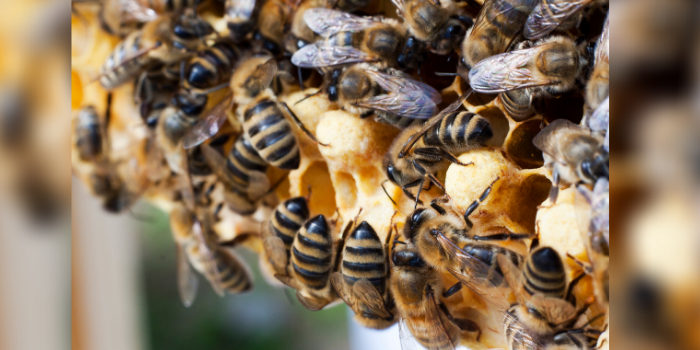
Why Carniolan Honeybees are the Beekeeper's Best Choice
In an earlier post, The Beekeeper's Guide to Swarm Prevention - Part 2, we stated that the Carniolan species of honeybees were more prone to swarming activities. Yet, when you purchase a NUC (live bees) from us, this is the species of bee we sell. In this blog post, we’ll discuss why this is so and why the Carniolan honeybee is the best option for many beekeepers.
Why choose the Carniolan species of honeybees?
The most common species of honeybee is the Western honeybee, Apis mellifera, sometimes referred to as the European honeybee. It’s so popular, in fact, it’s found on every continent except Antarctica. This should come as no surprise since it’s an exceptional pollinator and a great honey producer.
The Carniolan bee is a subspecies of the Western honeybee, Apis mellifera carnica. Sometimes referred to as “Carnies,” the Carniolan originated in Eastern Europe. This means it’s adapted to long hot summers and cold winters, making it the ideal choice for many beekeepers all across the US.
Carniolan Honeybees are Prone to Swarming Activities
Yes, Carniolans are prone to swarming, but for all the right reasons.
Because of the early and abundant honey flow already mentioned, Carniolan honeybees can fill up a hive quickly. When they perceive they’ll run out of room, they may swarm. If they do, they’ll take a large portion of bees and honey with them. Therefore, it’s important to stay on top of hive inspections, be prepared for swarming activities and be prepared to give them more space — brood chambers and honey supers — when they need it. Ensure the bees have plenty of storage capacity before the first nectar flow in your area.
So, although they may be more prone to swarming, it’s because they are such good producers early in the season. With a little preparedness and planning, this shouldn’t be an issue. This will mean regular and frequent hive inspections to stay on top of their quickly changing needs.
Carniolans are Exceptional Producers
Carniolan honeybees begin foraging activities very early in the spring, giving them lots of time to collect plenty of resources for honey production — for you and their winter food stores. The Carniolan honeybee has an exceptionally long tongue — one of the longest in all honeybee species, making it possible for them to collect nectar stores in flowers other bees may not be able to access. This can be especially important in areas where red clover is an important forage crop.
Carniolan honeybees are very adept at adjusting their worker population to nectar availability. Carniolans can make rapid increases in population levels to take full advantage of each nectar flow. They also quickly reduce brood production during a nectar dearth. The ability to make these quick adjustments makes it possible for them to store large volumes of pollen and honey when it’s available. It also makes it possible for them to have smaller numbers of bees to overwinter successfully.
Other Reasons Beekeepers Love Carniolan Honeybees
If you’re looking for additional reasons to choose Carniolan bees, Carniolan honeybees:
- Are considered one of the calmest species of bees
- Are considered gentle and non-aggressive and are fairly tolerant of their beekeepers
- Have the ability to defend the hive against many insect pests
- Are resistant to some parasites and diseases that may debilitate other subspecies of bees
- Can be kept in populated areas
- Experience less drift between hives because they have a great sense of orientation
- Gather nectar on cooler and overcast days, as well as, later in the evening and earlier in the morning compared to many other species of bees
As you can see, the Carniolan honeybee has lots of great attributes. With a reduced need for winter resources and explosive spring population increases, the Carniolan is one of the most economically sustainable species of bees. If you need to purchase live bees to add to your apiary this spring, our NUCs continue to be economically priced at 2020 prices.
Spring is just around the corner and so the fun begins. Time to put all that knowledge you’ve been collecting to good use!
General Questions About Carniolan Honeybees
How does the swarming behavior of Carniolan honeybees compare with other subspecies, such as Italian honeybees, in terms of frequency and conditions under which it occurs?
Carniolan honeybees tend to swarm more frequently than Italian honeybees, often in response to a lack of space or an abundance of resources. They rapidly increase their numbers in early spring, while Italian honeybees are less prone to swarming and are preferred for their more manageable nature.
What specific diseases and parasites are Carniolan honeybees resistant to, and how does this resistance compare to other honeybee species?
Carniolan honeybees show better tolerance to varroa mites and some brood diseases due to their vigorous grooming behaviors and stronger immune response. This natural resistance reduces the need for chemical treatments, making them a good choice for organic beekeeping.
Can you provide more details on the "quick adjustments" Carniolan bees make in population levels?
Carniolan bees adjust their population levels based on nectar availability. The queen's laying rate increases during abundant forage periods, leading to rapid population growth, and decreases during nectar dearths to conserve resources, ensuring the colony size matches current conditions.



Comments
Leave a comment